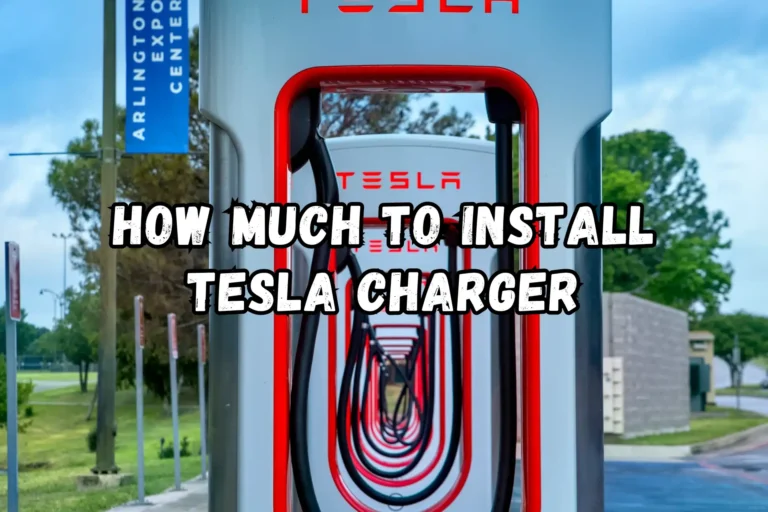It is becoming increasingly important to have accessible and convenient charging infrastructure in order to support the growth of electric vehicles (EVs). EV adoption relies heavily on traditional charging stations, but these stations are not always available or flexible enough to support EV adoption.
It has been found that mobile EV charging is a promising solution to this challenge. Using portable charging systems, drivers are able to charge their electric vehicles directly on the road, providing them with a convenient and adaptable solution. Mobile electric vehicle charging is examined in this post, including its definition, benefits, and potential impact on electric mobility in the future.
What is mobile EV charging?
The mobile electric vehicle charging system provides EVs with mobile charging infrastructure that can be transported wherever they are, which is also referred to as on-demand or roving charging. A mobile charging unit offers a flexible and adaptable approach to charging electric vehicles, in contrast to fixed charging stations, which are permanently installed at specific locations.

Charger units, such as generators or battery packs, work by directly supplying electricity directly to electric vehicles by combining a mobile source of power and charging equipment. The mobile EV charging solution can take many forms. A mobile charging van or trailer can be fitted with multiple charging points and sufficient capacity to provide rapid charging for several vehicles at once. It is also possible to set up portable charging stations temporarily in parking lots or event venues that lack permanent charging infrastructure to accommodate electric vehicles.
Benefits of mobile EV charging
Accessibility and convenience
Mobile EV charging brings charging capability directly to EV owners, addressing the challenge of limited charging infrastructure in certain areas. It provides flexibility by enabling charging at remote locations, temporary events, or places where fixed charging stations may not be economically viable. This accessibility ensures that EV drivers have peace of mind, knowing they can charge their vehicles whenever and wherever needed.
Rapid deployment and scalability
These mobile charging units are ideal for addressing temporary charging needs since they are quick to deploy. In places where charging is a high demand, such as festivals, concerts, or construction sites, they can be easily transported. They can also be scaled as demand grows, so they do not require extensive infrastructure upgrades or construction upgrades to add more charging capacity.
Reducing range anxiety
There is a worry for EV drivers that they won’t be able to reach a charging station before they run out of power. In areas where fixed charging stations are unavailable or too far away, mobile EV charging mitigates this “range anxiety.” By expanding this charging network, electric vehicle owners will feel more confident, which will lead to a wider adoption of electric vehicles.
Deciding if mobile EV charging is right for you
In order to make an informed decision about whether mobile EV charging is right for a fleet, there are a number of factors to take into account. Here are some of the key steps and factors that fleet operators should consider:

Assess charging needs
Consider factors like the number of electric vehicles in the fleet, their daily mileage, as well as the availability and proximity of fixed charging infrastructure when evaluating the charging requirements of the fleet. Find out what operational gaps or specific scenarios could be met through mobile charging, such as remote job sites or special events.
Cost-benefit analysis
Assess mobile EV charging’s financial implications by carrying out a cost-benefit analysis. The potential benefits of mobile charging units include increased operational efficiency, flexibility, and reduced downtime, which are offset by the investment and operational costs, including equipment, maintenance, and charging fees. Taking into consideration the fleet’s charging requirements will yield long-term savings and a return on investment.
Fleet operations and charging patterns
Determine how the fleet operates and charges. Consider factors such as daily routes, average mileage, and vehicle downtime when evaluating the fleet’s operations. During peak demand periods or when vehicles are located away from traditional charging stations, find opportunities where mobile charging can complement fixed infrastructure or address specific charging needs.
Scalability and future expansion
You should examine how scalable the fleet is and whether it can grow. Evaluate whether mobile charging can keep up with the increasing number of electric vehicles in the fleet without overburdening the existing charging infrastructure. Determine if the mobile charging solution can be scaled up easily and with flexibility to meet future needs.
Integration with fleet management systems
Assess the compatibility of mobile charging units with fleet management software, data collection, and reporting capabilities. Determine how mobile EV charging can integrate with existing fleet management systems. Monitoring and controlling charging operations efficiently, tracking energy consumption, and generating billing and analysis reports are all important aspects.
The future of mobile EV charging
Mobile EV charging represents a promising avenue for the future of electric mobility. With the advancement of technology, we can expect even more efficient and powerful mobile charging solutions in the future. As mobile electric vehicle charging systems advance, they will improve performance and sustainability by increasing charging speeds, expanding storage capacity, and integrating renewable energy sources.
Creating a seamless charging ecosystem will also require collaboration between automakers, energy companies, and mobile charging providers. In order to provide electric vehicle owners with an efficient and harmonized charging experience, mobile charging solutions will need to be integrated with existing charging networks and smart grid infrastructure.
Conclusion
Electric vehicles are growing rapidly, and mobile charging offers an innovative and flexible way to support this growth. Mobile charging has the potential to reduce barriers to EV adoption and improve the overall charging experience for drivers by enhancing accessibility, convenience, rapid deployment, and grid support. With the advancement of technology and the expansion of partnerships, mobile charging solutions will become an integral part of electric mobility, allowing EV owners to have convenient and reliable access to charging infrastructure wherever they are.
Frequently Asked Questions
What is a mobile charging EV?
On-demand or roving charging is also known as mobile EV charging, which refers to the provision of portable chargers that can be transported to EVs wherever they are needed.
What is fleet EV charging?
Using an electric vehicle fleet charging system, multiple electric vehicles can be charged simultaneously, usually from a centralized location, to maintain their operational readiness.
What is an EV charging system?
AC power is provided to the EV, 120V or 240V, and a battery charger controls the charging process by converting AC power into DC power for charging the battery. During DCFC, AC power is converted to DC power and the DC power is sent directly to the EV battery, bypassing the onboard charger, as is done with DCFC.
What is portable EV charging?
Portable chargers are designed to be compact, portable, and lightweight (hence the name), usually weighing between five and fifteen pounds each. They are useful if you are unable to find a public charging station.







